

Throughout history, the art world has been dominated by men, and as a result, many talented women artists have been forgotten or overlooked. Despite facing numerous obstacles and challenges, these women persisted in their passion for art, producing stunning works that deserve recognition and appreciation.
One of the biggest obstacles women artists faced was the lack of access to education and training. Until the 19th century, art schools were typically reserved for men, and women were only allowed to study art privately or in informal settings. This limited their exposure to techniques and artistic concepts, hindering their ability to develop skills and create a significant body of work.
Moreover, women artists were often restricted to certain subject matter and styles considered “suitable” for them, such as still lifes and portraits, rather than more challenging and provocative themes. This limitation affected the content of their art and hindered their ability to gain recognition in the art world, as they were often not taken seriously as artists.
In addition, women artists faced financial difficulties as they were often denied access to patronage and funding opportunities reserved for male artists. This meant that they had to rely on the support of their families or sell their work for low prices, which made it difficult for them to establish themselves as professional artists.
Despite these obstacles, many women artists persevered and produced remarkable works that challenged the conventions of their time. One such artist was Artemisia Gentileschi, one of the few women to succeed in the male-dominated art world of the 17th century. She is known for her dramatic and powerful depictions of biblical and mythological scenes, often featuring strong female protagonists.
Another notable artist is Frida Kahlo, whose vibrant and highly personal paintings have become iconic in the art world. Kahlo faced numerous challenges throughout her life, including a debilitating bus accident that left her with lifelong pain and health problems. Despite these obstacles, she continued to create art that explored themes of identity, gender, and cultural identity.
Unfortunately, despite the exceptional work produced by these and other women artists, their contributions have been largely ignored or dismissed in the traditional art historical canon. In recent years, efforts have been made to rectify this historical bias and give women artists the recognition they deserve.
The obstacles and challenges faced by women artists throughout history were numerous and daunting. However, despite these difficulties, many talented women persisted in their passion for art and produced works that challenged the conventions of their time. It is important to recognize and celebrate their contributions to the art world and continue promoting gender equality in all aspects of the arts.
 Gertrude Abercrombie
Gertrude Abercrombie
(1909–1977)
Gertrude Abercrombie was an American painter renowned for her contributions to the Surrealist movement in the United States. Her work, characterized by its dreamlike landscapes, enigmatic figures, and autobiographical elements, distinguished her as a prominent voice in a predominantly male-dominated art world. As a woman artist operating within the mid-20th century, Abercrombie's success and recognition were not only a testament to her exceptional talent but also an act of defiance against the gender norms of her time. Her influence extended beyond the canvas, as she became a central figure in the Chicago art scene, nurturing a community of artists, musicians, and writers. Abercrombie's legacy as an innovator within Surrealism and her role in paving the way for future generations of women artists underscore her impact on the art world.
Read More at The Chicago Art Institute
 Sofonisba Anguissola
Sofonisba Anguissola
(1532–1625)
Italian Renaissance painter Sofonisba Anguissola was the first woman artist to receive international fame for her life-like portraits. She was one of the most famous and successful portrait artists of her time. Her portraits were considered sophisticated, flattering, and intellectually engaging. She painted official portraits of the Spanish royal house. Anguissola was well-educated, beautiful, and accomplished in music and dancing. Her charming demeanor endeared her to the Spanish and Italian nobility.
Read More at ArtHerStory.org
 Marie-Gabrielle Capet
Marie-Gabrielle Capet
(1761–1818)
A French Neoclassical painter, Marie-Gabrielle Capet, came from a modest background. In 1781, she became a student of French painter Adelaide Labille-Guiard in Paris. She was an accomplished portrait painter of the upper-middle class, nobility, and, eventually, royalty. She worked in both watercolor and oil and made miniature works of art. She fell into obscurity after she died.
Read More at Wikipedia
 Lavinia Fontana
Lavinia Fontana
(1552–1614)
Lavinia Fontana was the first female artist who worked in the same realm as her male counterparts, outside a court or a convent. She was a Bolognese Mannerist painter working in Bologna and Rome. Her husband was also a painter who acted as her assistant and helped to manage their growing family of 11 children. Fontana was the foremost portraitist of noblewomen and later became the portraitist at the court of Pope Paul V. She received numerous honors, including a Felice Antonio Casoni bronze portrait medallion in 1611.
Read More at NMWA.org
Read Moreat CurturaColectiva
 Artemisia Gentileschi
Artemisia Gentileschi
(1593–1624)
Artemesia Gentileschi was considered one of the most skilled painters of her time. Her father trained her as a child, but she later studied with Agostino Tassi. A victim of rape by Tassi was, unfortunately, unsurprisingly blamed, and her reputation was questioned. She was the first woman admitted to the Florentine Academy of Fine Arts.
Read More at Observer
Read More at CurturaColectiva
 Fede Galizia
Fede Galizia
(1578–1630)
Fede Galizia was an Italian painter and one of the most pioneering female artists of the late Renaissance and early Baroque periods. Born in Milan, Galizia achieved recognition for her exceptional skills in still-life painting, a genre in which she was among the first women to excel, thereby carving a niche for herself in art history. Galizia's contributions extended beyond still lifes to include religious and portrait painting, where her ability to convey depth of emotion and character further solidified her reputation. By successfully pursuing a career in the arts at a time when women's participation was severely limited, Fede Galizia broke significant gender barriers, establishing herself as a pivotal figure who opened doors for future generations of women artists. Her legacy is a testament to her innovative spirit and talent, underscoring her importance in art history.
Read More at the Art History Project
 Caterina van Hemessen
Caterina van Hemessen
(1528–1588)
Caterina is the earliest female Flemish Renaissance painter and one of the only female painters of the period whose work can be verified. She is known for a series of miniature portraits of women completed between the late 1540s and early 1550s. She painted several religious compositions and is said to have made the first self-portrait of an artist seated at the easel.
Read More at Arts and Culture
Read More at CurturaColectiva
 Adélaïde Labille-Guiard
Adélaïde Labille-Guiard
(1749–1803)
Adélaïde Labille-Guiard was a champion of women artists. She was a successful portrait artist who began with miniatures but advanced to full-scale portraiture. Her most important work is “Self-Portrait with Two Pupils,” signed and dated 1785. The painting was exhibited at the Salon the same year. The artist is seated at the easel, with two female students standing behind her. The painting is a strong statement of a modern woman at the easel teaching younger women to paint.
Read More at the New York Metropolitan Museum
 Élisabeth Louise Vigée Le Brun
Élisabeth Louise Vigée Le Brun
(1755–1842)
Élisabeth Louise Vigée Le Brun was born in Paris and became a leading portrait painter during the late 18th century. She received early training from her portraitist father, who died when she was 12. She could not study formally because of her gender, yet by age 15, she had a fair number of portrait clients. She was one of few women who became a member of the Académie de St Luc and was established at court by the time she was 20.
Read More at the New York Metropolitan Museum
Read More at the National Gallery
Read More at CurturaColectiva
 Berthe Morisot
Berthe Morisot
(1841–1895)
Berthe Morisot was a French painter from an upper-middle-class family. She and her sister, Edma Morisot, studied informally with Jean-Baptise-Camille Corot. She was not as well known as other women painters then, but her work was important as she was a member of the French Impressionist movement. Her focus was on landscape and domestic scenes. Morisot married Eugene Manet, Edouard Manet’s brother, her friend, colleague, and instructor. Today, she is considered one of the best female artists in modern art.
Read More at Wikipedia
Read More at Visual Arts Cork
 Mary Moser
Mary Moser
(1744–1819)
Mary Moser was an esteemed British painter, celebrated as one of the most prominent women artists of the 18th century and a foundational figure in the English art world. As one of only two female founding members of the Royal Academy of Arts in London, alongside Angelica Kauffman, Moser's inclusion signified a groundbreaking acknowledgment of female artistic talent in a period dominated by male artists. Specializing in the genre of flower painting, a domain where she excelled and gained considerable acclaim, Moser's work was distinguished by its meticulous attention to detail, vibrant color palette, and dynamic compositions, which captured the transient beauty of nature with elegance and precision. Her contribution to art not only lies in her exceptional botanical compositions but also in her role in challenging the gender conventions of her time, paving the way for future generations of women artists. Through her achievements and her position in the Royal Academy, Mary Moser played a crucial role in elevating the status of women in the arts, asserting the significance of their creative contributions to the cultural landscape of Britain.
Read More at Wikipedia
 Plautilla Nelli
Plautilla Nelli
(1524–1588)
Plautilla Nelli was the first-known female Renaissance painter of Florence. She became a nun at age 14 and, in 1538, entered the Dominican convent of Santa Caterina da Siena. She was a self-taught artist at the Dominican convent of Santa Catherine of Siena in Piazza San Marco, Florence. Her work was heavily influenced by Savonarola’s teachings and Fra Bartolomeo’s artwork. She is known for her large-scale devotional paintings and as the first woman to paint a depiction of “The Last Supper.”
Read More at My Modern Met
Read More at Advancing Women Artists
 Clara Peeters
Clara Peeters
(1594–1653)
Clara Peeters came from Antwerp and trained in the Flemish Baroque painting tradition. Peeters was an important figure in the Dutch Golden Age. Her specialty was still-life painting because, during this period, female artists did not have access to the study of anatomy as part of their training.
Read More at CurturaColectiva
 Rachel Ruysch
Rachel Ruysch
(1664–1750)
Born in The Hague, Rachel Ruysch was a Dutch still-life painter born to Frederik Ruysch, a botanist, physician, and anatomist. When she was 15, she trained in Amsterdam under still-life painter Willem van Aelst. She was the first female member of the artist’s society Confrerie Picura. She was invited to serve at court in Dusseldorf under Johann Wilhelm Elector Palatine of Bavaria, where she remained until the prince died in 1716. She painted elaborate and intricate florals and still-life paintings.
Read More at NMWA.org
Read More at the National Gallery
 Elisabetta Sirani
Elisabetta Sirani
(1638–1665)
Elisabetta Sirani was a distinguished Italian Baroque artist recognized for her exceptional painting and etching abilities and her significant contribution to female education in the arts. A trailblazer in challenging gender norms of the 17th century, Sirani's work was characterized by its vibrant coloration and dynamic compositions, which set her apart in a predominantly male-dominated art world. Under the tutelage of her father, Giovanni Andrea Sirani, she developed a versatile portfolio that included religious, mythological, and historical themes. Her founding of an art school for women in Bologna was a pioneering effort that not only provided training to aspiring female artists but also contested societal barriers, marking a significant step towards gender equality in the arts. Despite her premature death at 27, Sirani's legacy as a prolific artist and educator endures, underscored by her role in shaping the path for future generations of women in the art world.
Read More at Art History Project
 Marie Spartali Stillman
Marie Spartali Stillman
(1844–1927)
Marie Spartali Stillman is a pivotal figure in the Pre-Raphaelite movement, distinguished by her masterful integration of mythological and literary motifs with the movement's hallmark aesthetic of vibrant coloration. Born into an affluent family with strong cultural affiliations, Stillman received her artistic training under the guidance of Ford Madox Brown and was significantly influenced by her interactions with contemporaries such as Dante Gabriel Rossetti and Edward Burne-Jones. Her oeuvre, characterized by its exploration of female subjectivity and emotional depth—exemplified in works like "Love’s Messenger" and "Beatrice"—challenged prevailing Victorian artistic conventions and paved the way for the reevaluation of women's roles in art. Despite the societal constraints of her time, Stillman managed to carve out a space for herself as an artist, balancing her personal life with her professional pursuits. Over time, her contributions have gained recognition, affirming her legacy as a pioneer in the Pre-Raphaelite movement and a trailblazer in portraying women in art.
Read More at PreRaphaelite Sisterhood
 Levina Teerlinc
Levina Teerlinc
(1510–1576)
Levina Teerlinc was a Flemish-born miniaturist. She was a highly-paid member of the Tudor court whose works were commissioned by Monarchs Henry VIII, Edward VI, Mary Tudor, and Elizabeth I. Teerlinc’s father was the foremost illuminator of sixteenth-century Flanders and most likely taught his daughter the art of limning (drawing). She was not the only artisan but was a gentlewoman of the Privy Chamber.
Read More at ArtHerStory.net
Celebrating Today's Women Artists


 Gertrude Abercrombie
Gertrude Abercrombie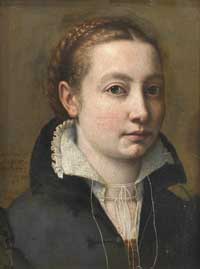 Sofonisba Anguissola
Sofonisba Anguissola Marie-Gabrielle Capet
Marie-Gabrielle Capet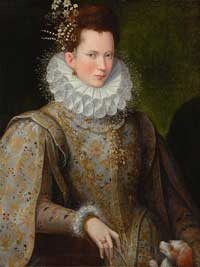 Lavinia Fontana
Lavinia Fontana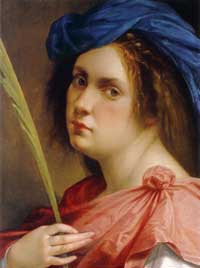 Artemisia Gentileschi
Artemisia Gentileschi Fede Galizia
Fede Galizia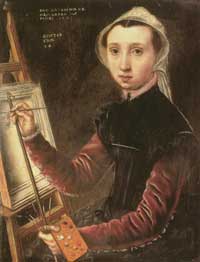 Caterina van Hemessen
Caterina van Hemessen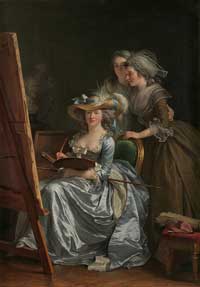 Adélaïde Labille-Guiard
Adélaïde Labille-Guiard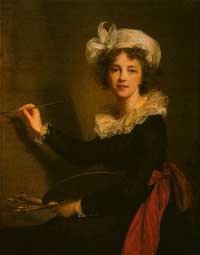 Élisabeth Louise Vigée Le Brun
Élisabeth Louise Vigée Le Brun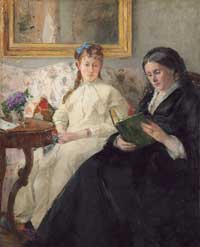 Berthe Morisot
Berthe Morisot Mary Moser
Mary Moser Plautilla Nelli
Plautilla Nelli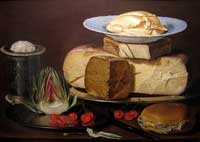 Clara Peeters
Clara Peeters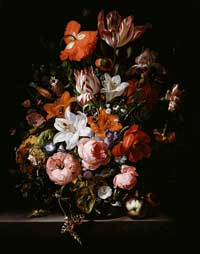 Rachel Ruysch
Rachel Ruysch Elisabetta Sirani
Elisabetta Sirani Marie Spartali Stillman
Marie Spartali Stillman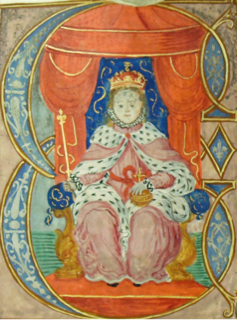 Levina Teerlinc
Levina Teerlinc



